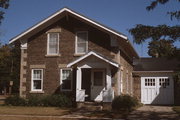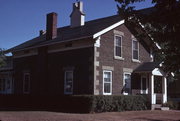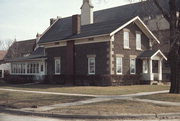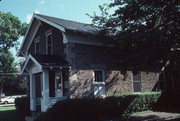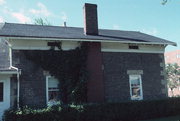Property Record
517 PROSPECT ST
Architecture and History Inventory
| Historic Name: | Rasey House |
|---|---|
| Other Name: | Hinman, Deacon Samuel, House |
| Contributing: | |
| Reference Number: | 16410 |
| Location (Address): | 517 PROSPECT ST |
|---|---|
| County: | Rock |
| City: | Beloit |
| Township/Village: | |
| Unincorporated Community: | |
| Town: | |
| Range: | |
| Direction: | |
| Section: | |
| Quarter Section: | |
| Quarter/Quarter Section: |
| Year Built: | 1850 |
|---|---|
| Additions: | |
| Survey Date: | 1978 |
| Historic Use: | house |
| Architectural Style: | Greek Revival |
| Structural System: | |
| Wall Material: | Cobblestone |
| Architect: | Chester Clark and Reverend Johnson |
| Other Buildings On Site: | |
| Demolished?: | No |
| Demolished Date: |
| National/State Register Listing Name: | Rasey House |
|---|---|
| National Register Listing Date: | 12/27/1974 |
| State Register Listing Date: | 1/1/1989 |
| National Register Multiple Property Name: |
| Additional Information: | A 'site file' exists for this property. It contains additional information such as correspondence, newspaper clippings, or historical information. It is a public record and may be viewed in person at the Wisconsin Historical Society, State Historic Preservation Office. COBBLESTONE HOUSE OF 1850 BUILT AS A BELOIT COLLEGE FUND RAISING PROJECT AND OCCUPIED ORIGINALLY BY THE FIRST COLLEGE PRESIDENT. CHESTER CLARK WAS THE MASON. Built of grey cobblestones gathered from the bed of Turtle Creek, the Rasey House (or the Deacon Samuel Hinman House) is architecturally significant as a well-preserved example of Rock County's cobblestone houses. A one and one-half story building, the house is a simple rectangle in plan. The cobblestones are arranged in thin horizontal rows separated by half-round projecting mortar joints, a type of construction "frequently" used in Rock County, according to architetural hitorian Richard Perrin, and which "may be seen to good advantage in the Rasey House." The main (west) facade is a simple composition with three first-floor openings, the southernmost being the doorway, and two second-floor window openings. Stone blocks are used as sills and lintels on all openings in the cobblestone fabric and also as quoins. The side (south and north) facades have three symmetrical window openings on the first floor, except on the north where the middle window has been covered by a later chimney. The rear (east) facade is masked by an attached one-story enclosed porch. A porch added to the front facade in the 20th century appears to be a bungalow design. The Rasey House has a unique historical association with the growth of Beloit College. Originally constructed as a fund raising project for the young school, the house was built from a subscription of donated labor and materials. When the house was sold at the end of 1851 to Deacon Samuel Hinman, the sale price helped replenish empty college coffers. Immediately prior to its sale, from June, 1850 to November, 1851, the house was the residence of Professor A. L. Chapin, the College's first president and the man who designed the school's first curriculum. The Rasey House is a Wisconsin Registered Landmark and was entered on the National Register of Historic Places December 27, 1974. This building is also a contributing resource in the Near East Side Historic District. Covenant/Easement: From 8/8/1979 to 8/7/1984. |
|---|---|
| Bibliographic References: | COBBLESTONE BUILDINGS IN WI p. 14. B. Buildings of Wisconsin manuscript. |
| Wisconsin Architecture and History Inventory, State Historic Preservation Office, Wisconsin Historical Society, Madison, Wisconsin |

